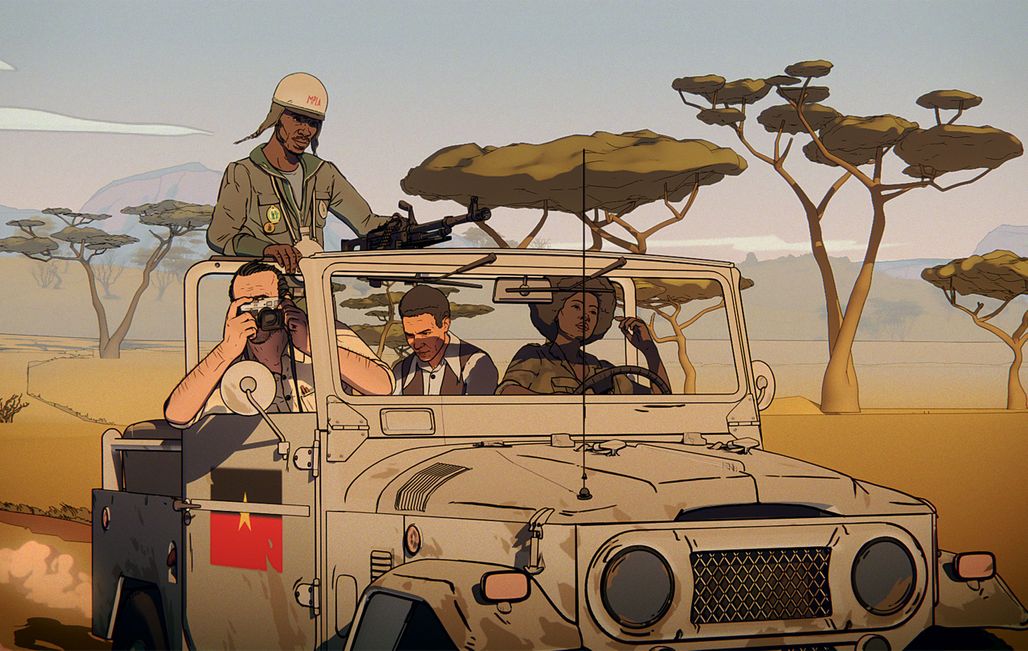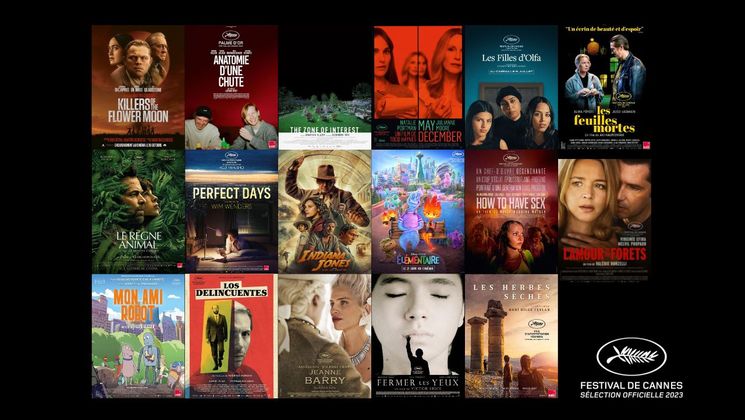
Another Day of Life, the Angolan front line by Ryszard Kapuściński

The dramatic biopic, Another Day of Life describes the nightmare of war in Angola in 1975 through the eyes of one of the greatest reporters of all time, Ryszard Kapuściński. Presented as a Special Screening, this documentary and animated film is an adaptation of the book Another Day of Life, the most personal of all the books written by this Polish journalist turned author, described by Gabriel García Márquez as "the finest war correspondant of the 20th century". It took directors Raúl de La Fuente and Damian Nenow 10 years to complete the film, working hand-in-hand to recount this true story.
Ryszard Kapuściński tackled many different topics throughout his career. Why did you decide to focus on Another Day of Life, his 1976 book about Angola?
Raúl Another day of life is Kapuściński's favourite book… and also mine. A story about journalism in conflict zones. His most cinematographic and personal book. This surrealistic diary fascinated me: the desperate chronicle of a reporter at the limit of his strength, fighting to survive and find the truth in a chaotic and fuzzy war.
This film is a hallucinatory trip to the heart of darkness, a Cold War tale with a thrilling spy mood, magnetic topics and characters: Che Guevara, Henry Kissinger, the CIA, Cuban agents, freedom fighters, boy soldiers, epic battles and, above all, the surreal and poetic approach by Kapuściński.
Damian What I have always admired most in Kapuściński’s writing is its poetry and creative aspect. He uses these features with virtuosity to describe individual human perception of the world, and through that – to portray the condition of entire nations and even continents. This is the essential formula of his writing, and it was fully developed in Angola. The book is a testimony of this process and that's what makes it so special. The reporter becomes a writer. We never wanted to simply illustrate the book, but to make a film about Kapuściński maturing in order to write it! Somehow, we felt like we were utilizing his very own method. We focused on Kapuściński’s journey and through that prism we tried to reveal something universal about the world we live in.
You show how Kapuściński took the responsibilities of a war reporter seriously, the importance of what he chooses to say and not to say. Was he forced to hold information back many times throughout his career?
Raúl Only Kapuściński could answer your question. To Kapuściński real journalism was intentional, one that sets a target and tries to provoke some sort of change. He wrote to break down stereotypes, to bring justice. Also for ethical reasons: the poor tend to be silent. His journalism had a mission: to make the voice of the poor heard. You have to choose a side in order to tell this to the world. And this implies a compromise that extends beyond the boundaries of journalism.
Damian The very presence of a reporter – a witness – and the information he or she has may change the course of events. I believe that this is a huge burden which causes extreme dilemmas. Certainly, Kapuściński had to face them many times throughout his career. How often was he forced to stay silent, and how many times it was his moral and ethical decision to keep quiet or not – that we will never know. One thing is certain: there is no easy way out of such situations. That's what happened in Angola. Kapuściński found himself in a position in which his every action intensified the chaos of war – the “Confusao”. This state, in a way, pushed him to seek a new writing formula.
The film pays tribute to the charismatic guerrilla leader Carlota, who was she?
Raúl Carlota was a very young and idealistic guerrilla woman. Mulatto, and a feminist, this legendary Angolan commander dreamed of a free and egalitarian society. To Kapuściński, Carlota portrayed the purest values of the freedom fighter.
On the southern front, surrounded by the enemy, Carlota looked Kapuściński in the eyes: “Make sure they don't forget us”. Kapuściński took a shot with his camera and immortalized her on a beautiful pic on a bridge. In that very moment, the writer who inspires the film “Another day of life” was born.
Damian Kapuściński was always fascinated by the romantic, iconic figures of freedom fighters. In our film, he goes through hell just to meet such a person. Along the way he meets Carlota – a real person as well as a local legend. She was a young girl who became famous for her heroism and courage. She saved the lives of dozens of children. Kapuściński saw in her the true face of Angola. She was also a very charming and beautiful woman. She was like a ray of sunlight on a cloudy day. Her sudden death hit him very hard.
Another day of life shows Kapuściński working as a war reporter, what did the people you met say about his personality?
Raúl He was smart, cultured, an excellent conversationalist, passionate and above all, empathetic. To depict “the voiceless”, Kapuściński set himself a very high ethical compromise: “I believe I should not write about people without living, at least, a small fraction of what they endure”.
This premise led him to live side by side with his protagonists, to jump on bone shaker trucks, travel across war fronts controlled by the enemy, disobey orders from his superiors and the military chiefs. His mission: to tell the truth. And his target: to reverse injustices.
Damian Kapuściński was an extremely humble and charming man who loved the world. He understood, respected and trusted every single person anywhere on Earth, despite cultural and religious differences. He was able to open himself up to others with a child’s naiveté. Children have no prejudices and enter the world as innocent creatures, with no prior judgements. Kapuściński also had a special weapon – his smile. Legend has it that he was able to disarm soldiers just by smiling at them. We studied this, watching his interviews. His secret was timing. His was a gradual smile, constantly widening his smile over many minutes. It never froze for a single moment.
Another day of life mixes animation and documentary, how did you share the work?
Raúl An animation film incorporating documentary footage? Or a documentary, told through animation? We invested nearly 10 years directing this film, based on a true story. Animation? Documentary? For Damian and me it is just a film, directed 50% and inspired by the words of the master Kapuściński himself: “the sense of life is on crossing borders”.
Damian The basis of this format was a comprehensive, in-depth integration of two worlds. Both layers shape one and the same story. The key was to prepare them together and at the same time. We did all the most important work on the film together. Consulting and brainstorming pretty much everything. Starting from story development, script work, through recording actors and animation, until the final edit.


